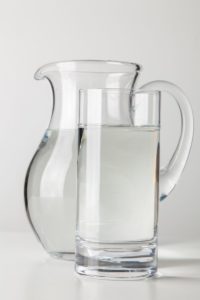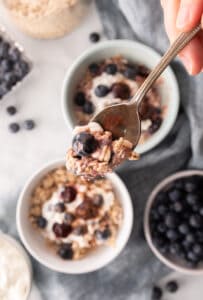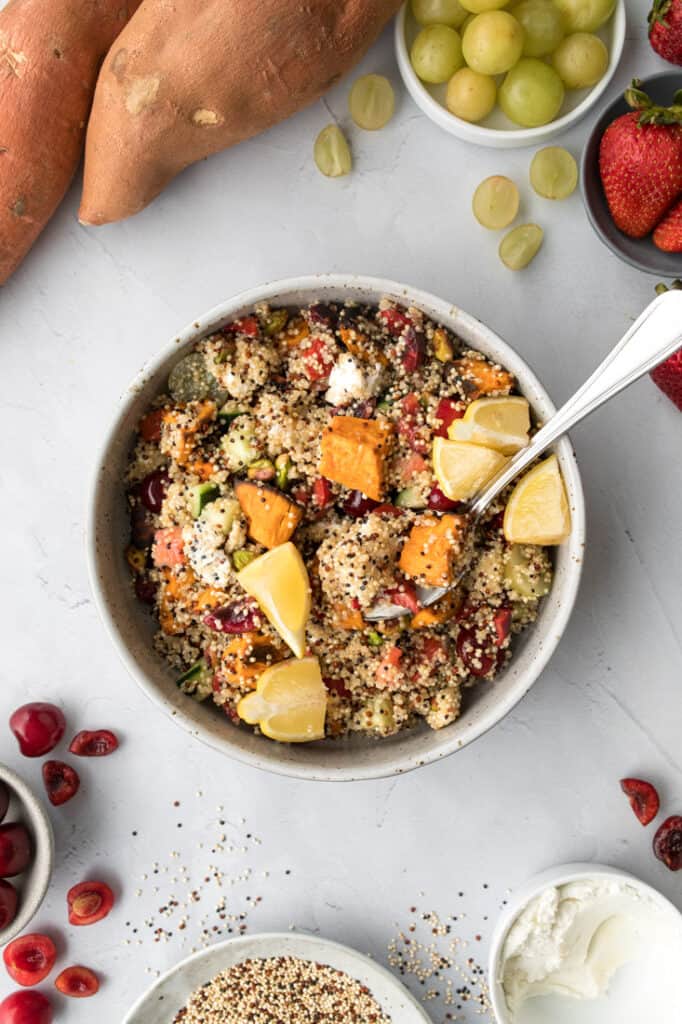Your Winter Running Hydration Plan (Avoiding Dehydration in Winter)
- January 20, 2020
- Last Updated: March 2, 2022
- 1 Comment
- Sports Nutrition
While you may only correlate dehydration with warm weather running, dehydration in winter months can be common. These hydration facts will help keep you hydrated and healthy when crafting your winter running hydration plan.
It’s that time of year where temperatures drop, perhaps snow accumulation is happening and the darkness seems to stretch on forever!
While some people prefer running or exercising in cold temps versus hot, there are things to be aware of when running in winter months in order to make sure you are adequately hydrated, and hence, performing efficiently.
I’ve already written about hydration tips for summer running, so let’s talk about running in cold weather and how to hydrate.
To break down this huge topic of your winter running hydration plan, we’ll break it down this way.
Table of contents
- Why Running Hydration is Important
- Running in Cold Weather and How Cold Weather Affects Hydration Status
- Hydration Before and After Running
- How to Stay Hydrated While Running Long Distances
- How to Carry Water While Running
- Symptoms of Dehydration
- How Dehydration Affects Athletic Performance
- Adequate Hydration vs. Dehydration for Athletic Performance
Why Running Hydration is Important
Water makes up over two-thirds of a healthy human body. Water is incredibly important for the body, especially for the brain, heart, and muscles.
Additionally, water helps rid the body of toxic wastes, helps carry nutrients and oxygen to all cells in the body and helps keep your muscles fluid & pliable (rather than rigid and stiff).
When you think of it this way, it’s no wonder that hydration has a role in running and contracting muscles.
Hydration can be quite confusing, which is why we have a whole module on developing your hydration plan in our endurance fueling course!
General Hydration Tips
A general rule of thumb for a healthy individual is to aim for drinking half your body weight in ounces of water (or other non-caloric beverages) per day.
So, while I hate to bring weight into this, an example would be: If someone weighs 150 pounds, they would aim to drink at least 75 ounces of water per day.
Note that this does not include hydration needs before, during, or after exercise (we’re going to get to that).
How Hydration Works
If you find yourself going to the bathroom often, or otherwise feel dehydrated (symptoms below), you may need to add in some electrolytes, such as sodium, to your beverages for better fluid retention.
When you drink a lot of plain water at once, it flows quickly through the body and hence, your body excretes it via urine.

Electrolytes, namely sodium and potassium, help your body “keep” that water around longer.
Therefore, it can be beneficial to drink slowly throughout the day or to drink something with added sodium or potassium in order to help your body retain the fluids.

What’s The Best Electrolyte Drink For Runners?
There’s no “one” best hydration drink for runners, but for many, it looks like drinking electrolyte-infused waters, sports drinks, homemade electrolyte-rich drinks, coconut water, or fruit-infused water.

You can also consume foods with sodium or potassium, such as crackers, pretzels, fruits, and vegetables, to help aid in hydration throughout the day.
Don’t limit hydration to just beverages! Lots of fruits and vegetables are also high in water content, such as watermelon and berries, so incorporating more of those into your diet can also help with hydration status.
Running in Cold Weather and How Cold Weather Affects Hydration Status
Don’t underestimate your needs for hydration during winter weather. Running in cold weather may impact hydration status in several ways, mainly because you are less aware of sweat evaporation.
Dehydration in Winter Months
One reason for dehydration in winter is that you may not notice your body’s thirst signals as clearly as during hot weather, which may result in your drinking less fluids overall in the colder months.
Secondly, if you are not dressed properly for colder weather, your body may have to work harder in order to maintain its core temperature, which results in the body then losing more fluid through respiration and sweat.
Therefore, by underdressing, you are making your body work harder. However, overdressing can be problematic as well.
If you are overdressed in cold weather, your body may be producing more sweat than you realize. And, the cold, dry air from outside and also from indoor heating can lead to an increase in fluid loss.
Before you get to your foam rolling after running exercises, make sure to hydrate!
Try Drinking Warm Beverages
While drinking cold beverages in the hotter months may be appealing and feel good, there may be a benefit to drinking warm or hot beverages during the winter months.

One, warm or hot beverages may be more appealing during colder temperatures, which would likely result in them actually being consumed.
Also, warm or hot beverages can help to regulate the body’s internal temperature. Using an insulated container for tea, broth, soup, or other warm beverages is recommended in the cold weather months to help avoid dehydration in winter.
Hydration Before and After Running
Before exercise, it is important to be at a normal level of hydration – neither over hydrated or dehydrated.
A good starting point to achieve this is by following the general rule of thumb for hydration to drink half of your body weight in ounces per day, drinking both water and eating fruits and vegetables throughout the day.
If you are about 2-3 hours before exercise, it is recommended to drink 20 ounces of water or sports drink.
Just like we want to practice our race day breakfast before a race, we also want to practice hydrating.

Drink 10 ounces of water or sports drink 10-20 minutes before exercise.
How to Stay Hydrated While Running Long Distances
Let’s talk a little bit about hydration for short vs. longer runs
A short run (less than 1 hour) typically requires nothing more than water for hydration and exercise performance.
Depending on your pre-workout hydration status, the distance you are running, and your individual sweat rate, you may want to carry water with you for a short run.
Or, make sure to drink enough before and after the workout.

When a run is longer than 1 hour or if the temperature is warm or you’re trying to stay hydrated in the summer months, that is when other factors come into play for proper hydration.
For longer runs, hydration is increasingly important to avoid becoming too dehydrated. If you’re running a marathon, having a marathon water plan (or knowing where the water stops are) is essential.
Adding in electrolytes, such as sodium, help the body to distribute and retain fluids better than water alone. There are lots of electrolyte products available to runners such as:
- Nuun tablets
- Pedialyte powder
- Sports drinks
- Lyteshow rapid rehydration
- SaltStick Capsules
- Hydralyte tabs or powder
You can also get electrolytes through gels and other products to supplement drinking plain water.

Also, adding in a source of carbohydrates for fuel will help with energy levels and exercise intensity as well as aiding in water absorption in body during longer runs.
Being properly hydrated can help reduce the risk of injury.
Hydration After Exercise
After exercise, it is important to rehydrate the body along with recovering with carbs and protein.
Research shows that to achieve rehydration after exercise, athletes should consume a moderate to high-sodium beverage in a volume equivalent to 150% of fluid loss.
That is, 24 ounces of fluid intake for every 1 pound of body weight lost over the course of an exercise session. Weighing yourself before and after a long or hard run can help you get an idea of how much fluid you are losing during exercise.
This extra fluid volume for rehydration helps compensate for urine excreted during the rehydration process.

How Much Should Water Should An Athlete Drink A Day?
So, athletes should follow the general recommendation of at least half of your weight in ounces, and then add additional water intake based on exercise.
Remember to add electrolytes too, to avoid becoming overhydrated.
How to Carry Water While Running
Now that we’ve discussed how much water you should be drinking while training in the winter, let’s discuss how to logistically carry it. You have so many options.

I love my running hydration vest, but you can also get a running water bottle that either attaches to your hand or is placed in a running belt.

Fitletic makes the best running hydration belt in my opinion, because it doesn’t bounce at all.
There are also running water backpacks which act as the perfect women’s hydration pack, with zippers and space to hold fuel, keys and cash as well.
Symptoms of Dehydration
An easy way to monitor if you are well hydrated is to look at the color of your urine, one of the biggest signs of being dehydrated.
Aim for a pale yellow color for adequate hydration. In contrast, a darker yellow or brownish color would indicate dehydration because it is very “concentrated.”
This chart from the Cleveland Clinic shows the different shades of yellow/amber to distinguish hydration from dehydration.
Dehydration can be dangerous, but severe dehydration can be deadly. Here are some of the signs and symptoms of the stages of dehydration.
Symptoms of dehydration may include:
- Dry mouth or skin
- Thirst
- Chills (dehydration chills)
- Muscle cramps
- Headaches
- Rapid heartbeat
- Lack of energy or mental clarity
- Constipation
Symptoms of severe dehydration include:
- Lack of sweat production
- Low blood pressure
- Rapid heart rate
- Sunken Eyes
- Dark urine
Seek immediate medical help if you are experiencing any of these symptoms, especially in our around exercise.
Severe dehydration can lead to heatstroke, coma, and death.
How Dehydration Affects Athletic Performance
When an athlete exercises, heat is created in the body. This leads the body to sweat more in order to cool itself back down. This can be especially problematic for children and teenage athletes.
Sweat rates are very individualized and can range from 1-2 liters per hour or more, depending on the athlete, weather, and sport. Gatorade Sports Science Institute (GSSI) has a Fluid Loss Calculator you can use to estimate your sweat rate during exercise.
Research among endurance performance has shown significant impairments in performance in the vast majority of studies when body water deficits exceeded 2-3%.

Note: For a 150 pound athlete, 2-3% of their body weight equals 3-4.5 pounds lost during exercise.
Dehydration may also increase gastrointestinal (GI) distress during exercise.
This is why it is important to begin exercise hydrated and to try and maintain hydration status during exercise.
Use your training runs to train the gut to accept fluids. Stomach comfort and fluid tolerance can improve with training, similar to testing out different fueling options during training runs.
Adequate Hydration vs. Dehydration for Athletic Performance

Do you have any favorite ways for staying hydrated in winter months?
Have you ever experienced dehydration?
Support Bucket List Tummy






























Like This Content?
Support Bucket List TummyThanks for this article! I didn’t realize going to the bathroom often when drinking water wasn’t the best, just thought it was from so much liquid haha. I’ll be adding electrolytes in more often now.